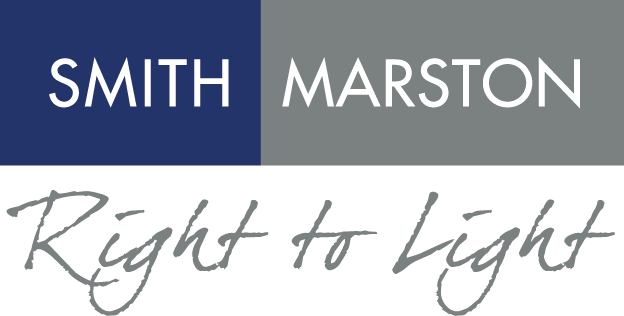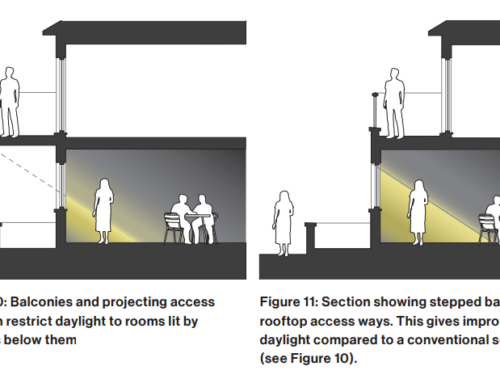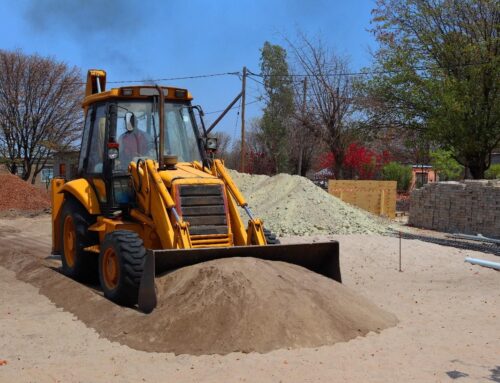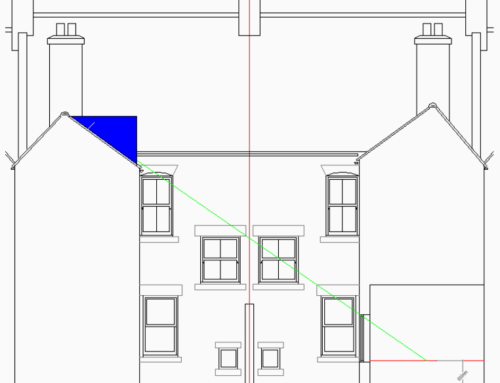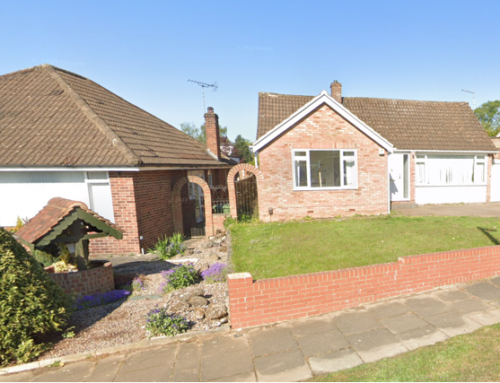Whilst this blog is titled to describe the process of taking a neighbour to court regarding legal right of light, I must start by saying that, of course, court action is not to be embarked upon lightly due to the very significant costs and, even for what might seemingly be the best and most certain legal cases, there will generally be at least some degree of uncertainty of outcome.
The reality is that legal right to light disputes very rarely end up in court for those very reasons; the vast majority of such disputes are settled out of court.
Whilst many people will dread the prospect of falling out with a neighbour, it is often as they say that an ‘English person’s home is their castle’ and sometimes even the most non-confrontational person might feel that further capitulation is not an option in the face of a neighbour’s works affecting legal boundaries or causing a loss of natural light to their home. If so, the possibility of heading down the road of legal action may be regarded as reluctantly unavoidable.
Is there a Legal Right at all?
The first matter to check is whether the relevant windows suffering a loss of light do have legal rights of light. Usually, a right will have been obtained after 20 years via Prescription but there can be occasions when a right is via a deed.
Generally, the rights of light will be in relation to clearly apparent window openings which have physically existed for in excess of 20 years, but it is also worth noting that there can be rights of light for windows previously blocked-up or possibly even transferred rights of light for windows in a new building ‘inherited’ from a former demolished building.
Conversely, there can be instances where it would normally seem that a window would be expected to have earned a Prescriptive right of light but that this is not the case for legal reasons such as a covenant or due to non-derogation from a grant.
This is something which must be confirmed before spending further time and expense in the exploration of the loss of light. Determining whether the windows have rights is key.
The appropriate consideration of whether windows do have rights of light and/or specifically rights of light in relation to a particular neighbour requires due diligence by the lawyer and/or surveyor to check the deeds.
Rights of Light for Long Leaseholders
As a further matter, there can be specific and onerous restrictions or requirements placed upon a long leaseholder within a leasehold agreement. Covenants can state that a leaseholder is legally bound to protect the property and the freeholder’s interest against anything which might reduce the value of the property, such as would generally be the case in respect of a loss of natural light. There can be covenants which prevent a long leaseholder from accepting compensation without the consent and agreement of the Freeholder.
Will there be a legal right of light injury?
Once it has been confirmed that the affected windows do have legal rights of light in relation to the proposed development (or other blockage of light), it is a matter of assessing the loss.
The 50:50 rule
As the case law precedent stands at the moment, the starting point as to whether there is a legal right of light injury is whether a neighbour’s room is left less than 50% adequately lit by daylight as a consequence of the blockage of natural light by their neighbour’s development.
That is the basic principle of the threshold for a legal injury but, of course, there is a multitude of ‘twists and turns’ of situations when that threshold may be a slightly higher threshold at up to about 55%. There is also the possibility of considering alternative internal room layouts and alternative room uses which can affect the significance of losses of light and, notably, can change whether this shows what would be regarded as legal injuries.
The Effect of Deeds on rights of light
Aside from the 50:50 rule, there can be rights present via a covenant within the deeds which might state that there must be no loss of light at all to the neighbour.
Clearly, the implications of this are much more significant and, if enforceable, can mean that a neighbour planning to extend or build a new structure might be completely prevented from doing so.
For use within legal proceedings, any consideration of the losses of light needs to be in the appropriate CPR35 format. There can be occasions when starting off with such a report is appropriate but due to the detail and accuracy needed, these assessments and reports can be costly. There will be many circumstances when a more basic appraisal (at a lower fee) may often be more appropriate to confirm whether there is a legal right of light injury and, if so, the strength of the legal case associated with this.
How to proceed with your right to light claim?
If it has been established that the window or windows do have legal rights of light and subsequently it has been confirmed that there will be legal right of light injuries as a consequence of the neighbour’s proposed works, there is then the decision to be made as to how to proceed.
Unavoidable legal action
As I started with this blog, most people will instinctively wish to avoid conflict with neighbours whenever possible whilst acknowledging that most people probably do have a tipping point at which time taking some action to protect their home is unavoidable.
At this point, there is the need for appropriate consideration of the tone and route of notification to the neighbour. There is no set process for this stage as some disagreements can be resolved with very little legal action and others will need to go through the full legal process.
It must be noted that rights of light is a specialist legal area and it is strongly advised that the appointed lawyer should be appropriately experienced and specialised, being fully familiar with the past case law.
Legal cover for right to light case
If the affected neighbour has legal cover on their home insurance, this can be very useful to them and certainly can allow at least part of the legal process to proceed without the affected neighbour incurring legal fees. For this to be a possibility, the insurance company will require at least some kind of appraisal of the rights of light to confirm the strength of the legal case. Some insurers cover legal involvement triggered by a fairly basic right of light surveyor appraisal, whereas others require a full CPR35 Expert Report before they agree to become involved.
Remedies for a legal right of light injury
The legal remedies for a right of light injury are an injunction to remove the ‘offending’ obstruction to the view of the sky or, alternatively, compensation in lieu of an injunction.
It is worth noting that generally the compensation is regarded as being instead of an injunction and thus there is significant negotiating strength in maintaining a stance of the threat of an injunction in any open correspondence, even if, behind the scenes, there is ongoing negotiation and exploration of the potential for the resolution of the right of light dispute by means of a payment of compensation on a ‘Without Prejudice’ basis. To not do this, would diminish a neighbour’s strength of negotiation regarding possible compensation; once that compensation has been openly discussed, it would be argued that the neighbour is not genuinely that bothered about the actual loss of light and that really it is just about the money. This would mean that the potential to obtain an injunction (if that were desired) and/or the negotiating threat of an injunction is probably lost.
Compensation settlements
From this point, hopefully the matter might be resolved with some negotiation leading to the agreement of a mutually acceptable amount of compensation or the developer might decide to amend their design to avoid the legal injury. It is worth noting that an amendment of the design to avoid a legal right of light injury does not necessarily mean no loss of light and, in fact, generally this will not be the case.
Right of Light thresholds
Right to light is a matter of what’s left rather than what’s lost. Although not absolute, if we assume the threshold for a legal injury was no less than 50% of adequately light by daylight, the reduction from 95% to 55% would not constitute legal injury. So successfully enforcing legal rights of light, whether that be outside of Court or via a legal injunction, may still result in significant losses.
Conversely, for a room that receives less than 50% of its light from daylight, which then faces further losses would be regarded as a legal injury. In this case, if given by a Court, an injunction would require that no more loss of daylight should be incurred.
Court Proceedings!
Before reaching the Courtroom, at least the developer (the Defendant in this situation) would issue a Part 36 Offer of compensation; an offer which is lodged with the Court but which is not revealed to the Judge until after the Judgement.
If the Court rules compensation, rather than an injunction, and if that compensation figure is less than the Part 36 Offer, it will be deemed that this offer should have been accepted and thus that both sides had unnecessary and avoidable time and costs losses. The Claimant would receive the award of compensation, would have to pay both their own costs and the Defendant’s costs, which may well exceed the compensation amount.
A Part 36 Offer is, therefore, a powerful tool that can help to resolve the situation. It is also possible for a Claimant to make a Part 36 Offer.
If, despite negotiations, Part 36 Offers and the realisation of increasing fees and the associated risks, no settlement is achieved and both sides continue to maintain their legal stance, then that day (or more) in Court may be inevitable. From here on, the outcome of the dispute is in the hands of the Judge. Regardless of all of the past discussions with the legal team and consideration of past case law precedent, although the Judge will, of course, take these matters into account, the Judge will make their own decision based upon the particular circumstances of this case which may or may not correspond with the legal team’s predictions and interpretations of the past case law.
Be Cautious about Court Action when it comes to right to light
As I started this blog, I finish by reiterating that a dispute which ends in Court, although necessary on occasions, must not be embarked upon lightly and it goes without saying that at least one party will leave the Court disappointed and with the associated cost implications of this.
Whilst we can assist with all aspects of assessment of right to lights losses, we are not legal advisors, and given the very specialist nature of this subject, you should always seek legal advice on such matters.
Related Articles
Rights Of Light: How To Handle Conflict Between Parties
Rights Of Light – Sometimes Pragmatism Is Best
How to Object to Planning Permission on the Grounds of Loss of Light
